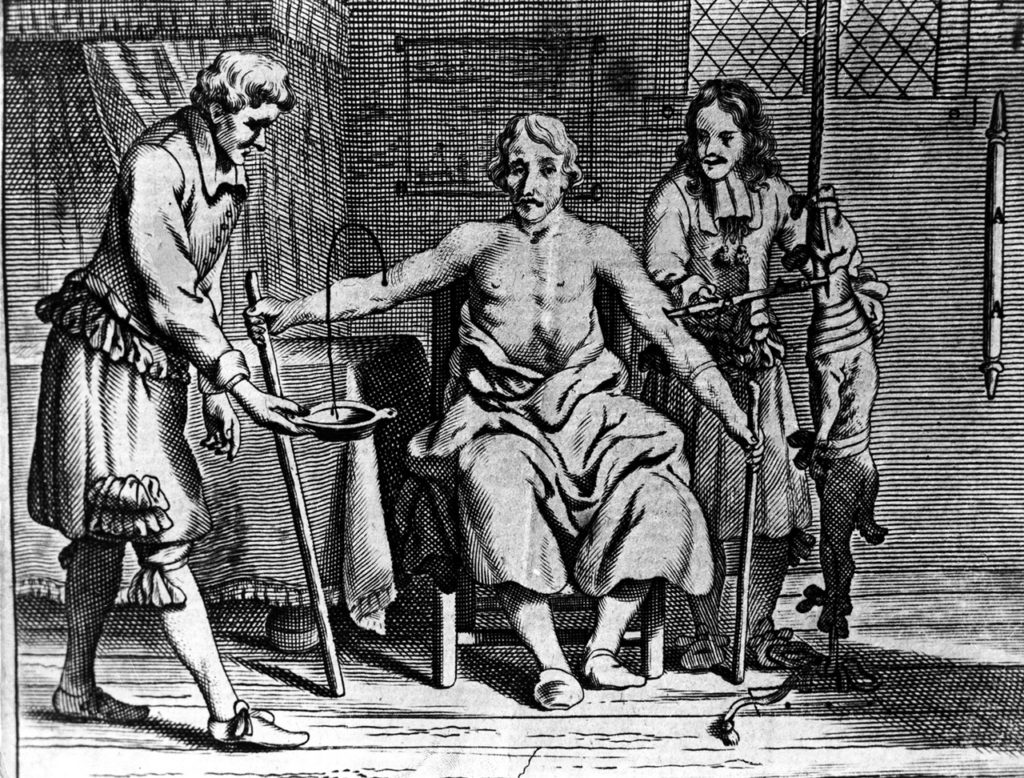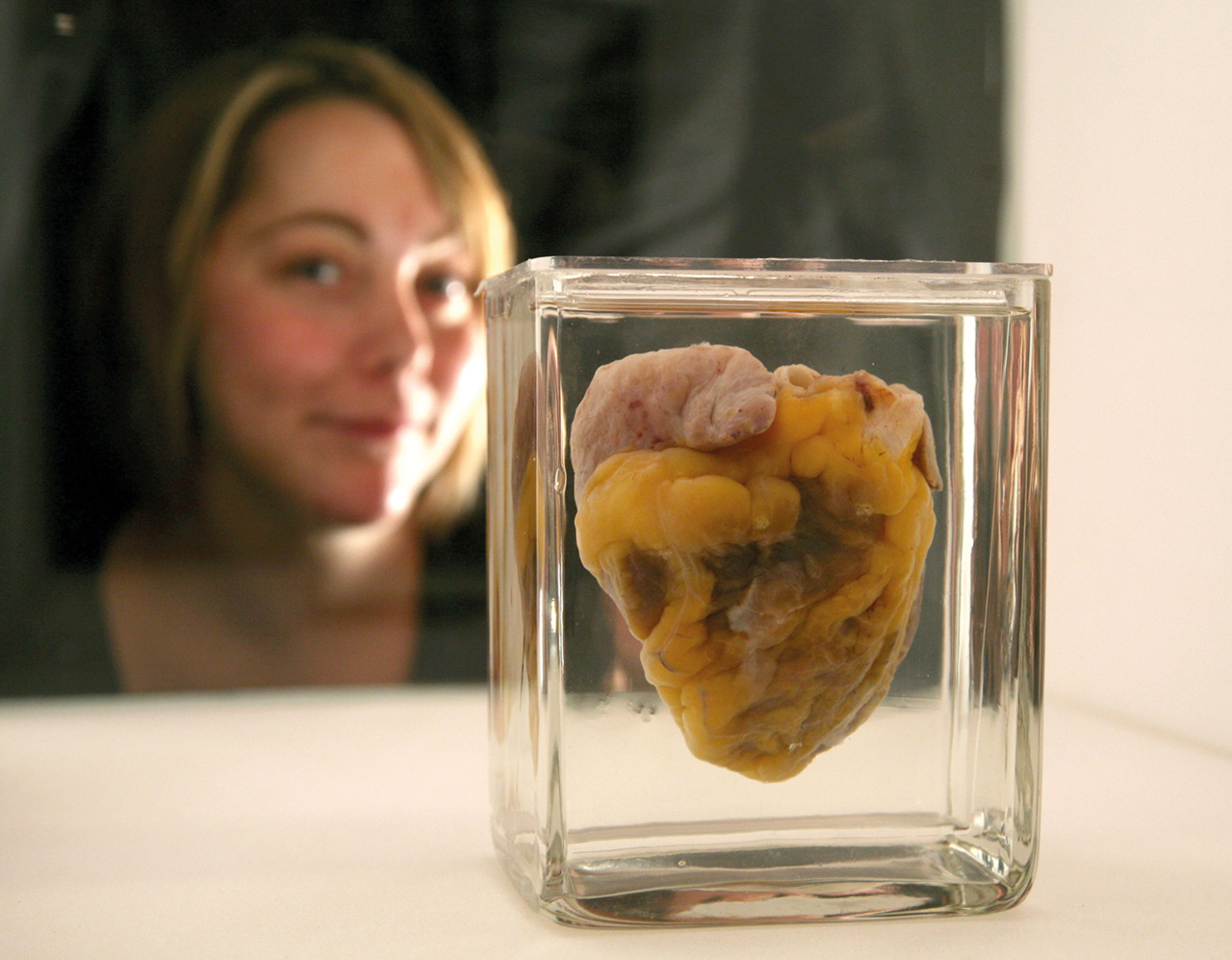Organ lessons
We think of transplant surgery as a modern scientific wonder but, as Paul Craddock discovered, it goes back centuries. And it also provokes elemental questions about what it means to have a body
It was nearly 15 years ago when a student, Jennifer Sutton, was photographed peering at her own heart though the glass of a museum case. This seemingly impossible situation came about because, as a teenager, Jennifer suffered from cardiomyopathy, a life-threatening condition meaning that the walls of her heart had grown thicker than they were supposed to be. Just three months before the photo was taken, surgeons had excised her diseased heart and replaced it. With someone else’s organ now working away inside her, she had donated her old one to the Wellcome Collection in London, which arranged for it to be a special exhibit in its first public exhibition.
There have been cases where person has received birthday gifts meant not for them but their organs
“Finally,” she told BBC reporters as she gazed at the inert specimen, “I can see this odd-looking lump of muscle that has given me so much upset.” The photographer captured both a touching story of a life saved and an implausible reality: a woman, with eyes full of life, staring at her own dead heart while her breath formed droplets on the outside
of its perspex case.
When I scrolled across this photo for the first time 11 or 12 years ago, I didn’t know very much about transplant surgery. I knew the basic story, the one most people know, about Christiaan Barnard, the South African surgeon and heart-throb who led the first heart transplant in December 1967. By lifting the heart out of one body and sewing it into another, he’d shown once and for all how the traditional seat of the soul was nothing but a component in a complex machine. And like Neil Armstrong bounding onto the moon just a few months later, it represented a post-war moment of triumph, a pinnacle of human achievement. But that was a long time ago.
The spine-tingling image of Jennifer Sutton promised a fresh perspective. Jennifer’s life sprang now from the heart of a dead stranger. What does it mean to have a body, if bits of it can be implanted into someone else? What does it mean to have a body in the first place? And what does it mean to be human, alive and an individual? It was this realisation that transplant surgery mattered on some primal level that made it compelling to me.
As it turned out, transplant surgery is one of the oldest forms of surgery, starting life as skin grafting in ancient India. According to the Sushruta Samhita – an ancient surgical text from the 6th century BC – a surgeon needed to know how to transplant skin if they were ever to treat a king. Records from this time are difficult to come by. But even the modern story of transplants began much earlier than I imagined, in Renaissance Italy. And right from the start people performing transplants thought about those big questions that Jennifer Sutton’s photograph still prompt for people today.
From at least the 1400s, skin grafting was a secret technique, preserved by families of surgeons in Italy. When in 1549 the renegade surgeon Leonardo Fioravanti tricked one of them into giving it up, he saw how it resembled horticultural grafting – the kind of operation performed on apple trees. Transplant surgery, for him, was “the farming of men” and “the agriculture of the body”. The technique he stole, incidentally, was used for facial reconstruction right up to the Second World War. But even this far back, when transplants were only skin deep, people were questioning whether meddling this much in the affairs of the body might be tantamount to playing God. The human body was supposedly divinely ordered, so should we really be moving bits of it around?

Later, in the 1660s, I found that Christopher Wren was one of the first scientists to experiment with blood transfusion – that was before he became famous as an architect for reconstructing St Paul’s Cathedral after the Great Fire of London. Along with Robert Boyle and Richard Lower, he was part of the early Royal Society, and blood transfusions were some of their first experiments. In both England and France, scientists used animals as donors for human recipients. Inspired by ancient Roman mythology, they hoped that by transfusing blood they could transplant something else – a calf’s youth could be transplanted, and a lamb’s calmness, but so could bovine slowness, and even ovine wooliness. One doctor even thought that a transfusion of cat’s blood could cure your epilepsy (which, at the time, was known as “falling sickness”). The idea that a transplant or transfusion might change our very beings seems still to be with us. Some organ recipients so strongly associate themselves with their bodies that they report their personalities fundamentally changed by their new organs. Most extremely, and tragically, there have also been cases where a recipient has received Christmas and birthday gifts meant not for them, but their organs. They’re sent by families who feel their loved one still alive, their heart beating inside the chest of a frightened stranger.
A century after the first blood transfusions, as the Georgians were inventing Christmastime and coffee house culture, dentists made a tidy profit from transplanting the teeth of poor children into the mouths of their social superiors. In a new, consumerist society, we began to associate ourselves more and more with our belongings. The worship of things became the worship of the self — and body parts that could be transplanted, like teeth, became another godless possession in a culture that defined you by what you looked like and what you owned. Cajoling a penniless child into giving up a freshly erupted tooth might not sound quite as serious as organ trafficking, but 18th century commentators were horrified by an all-too-familiar power dynamic: then, as now, the poor became a repository of body parts for the rich. And this revolting operation was only stopped when it became clear that the rich, too, were in danger – of picking up diseases and even dying from infection.
Transplants only became life-saving operations at the start of the 19th century, when the kindly midwife James Blundell first transfused blood from one human to another. For too long, he watched as woman after woman succumbed to blood loss during childbirth. Blundell knew blood transfusions were risky, but reasoned that these women would die anyway, so he thought it worth trying to replace what they were losing. It was the first time that anyone thought that transplants of any kind should be about replacing lost or deficient parts of the human machine. But transfusions didn’t always work. In fact, they rarely did, and were abandoned as various saline solutions became available. Some surgeons even reported successfully infusing table salt dissolved in water. By the end of the 19th century, transplants were seen as archaic, risky, and frequently fatal.
Then, at the beginning of the 20th century, the surgeon Alexis Carrel worked with the embroiderer Marie Anne Leroudier and figured out how to effectively sew together blood vessels.
By using embroidery tools and technique, this made organ transplants possible. And a little later, during the Second World War, the Dutch doctor Willem Kolff fashioned the first kidney dialysis machines out of sausage skins, an enamel bath and the frame of a shot-down German aircraft. By the middle of the century, transplants were seen as feats of great skill, with surgeons racing to be the first to perform kidney grafts, liver grafts, heart grafts – and more recently, hand and face transplants. As the surgeon Sir Roy Calne said, though, transplants are relatively easy operations – the difficult bit is the aftercare, the drugs and tackling rejection. It’s because of these complexities that it took until the 1980s until organ transplants could become the relatively routine miracles we know today. And thanks to bioengineering and stem cell science, new and wonderful transplants are on the horizon, from human heart tissue grown on the scaffold of a spinach leaf to living material that is neither plant nor animal, but a chimera of both.
I have never met Jennifer Sutton, but it changed my life when I saw that photograph of her peering at her own heart through the museum case. From playing God to transplant tourism, body shopping to fears of body swapping, organ shortages and touching stories of lives lost and lives saved, transplants are far more than a surgical specialism. They are ancient procedures that have for many centuries made us confront the big questions about human life and existence. It’s this hidden history that I’ve tried to bring out in Spare Parts: A Surprising History of Transplants – a previously untold history that goes to the very heart of what it means to be human.
Spare Parts: A Surprising History of Transplants by Paul Craddock is published by Fig Tree

Leave a reply
Your email address will not be published.